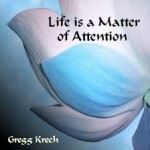Mindfulness and the Breath…The Common Denominator

For years I’ve debated with myself about what the most effective and direct approach is to bringing the present moment experience into my life. My tendency is to think that the combination of using physical sensations/the 5 senses, thinking, emotions and the breath is the most effective and balanced practice. Lately, every time I use the breath I get a thought that this is the common denominator. I don’t know why it’s important to me to specify what the common denominator is in mindfulness but since it keeps presenting itself to me I think it may deserve some attention.
To begin with, when I’m feeling stressed I find it easier to focus on the breath. I don’t know if that is the case for everyone, but it certainly is for me. Since I’m a fan of the path of least resistance I naturally gravitate to the breath in these situations. It seems to reconnect me with my body easier and faster than any other aspect of the practice. In the world of stress this is a big deal. Coping with stress usually involves some degree of disconnection. When we disconnect from our bodies we also disconnect from our thoughts, emotions and breath so if coming to the breath somehow reconnects me to these things quickly and easily… all the better. This is very important because that disconnection somehow perpetuates being stuck in fight or flight. It’s “as if” the body senses the disconnection and interprets it as meaning that there is still a danger to survival. As long as that perception remains, fight or flight to some degree will be present.
When we go into a stress reaction one of the first things that we notice is the change in our breathing. Instead of a slow, deep, nasal breath that starts in the belly we shift to a fast, shallow, mouth breath that situates itself in the chest. This kind of breathing is unhealthy for many reasons, probably mostly because it limits the amount of oxygen we take in. Our bodies are very dependent on oxygen to maintain peak functioning. The breath seems to always be front and center to how we function. In fact, when we stop functioning/die, the breath, or rather the lack of it, is the easiest way of telling that life as we are used to it has ceased. Life begins with that first breath and ends with the last. In between we want to maintain the natural rhythm of breathing and the best way to do that is by attending to it mindfully.
Mindfulness and the Breath…The Common Denominator Read More »









